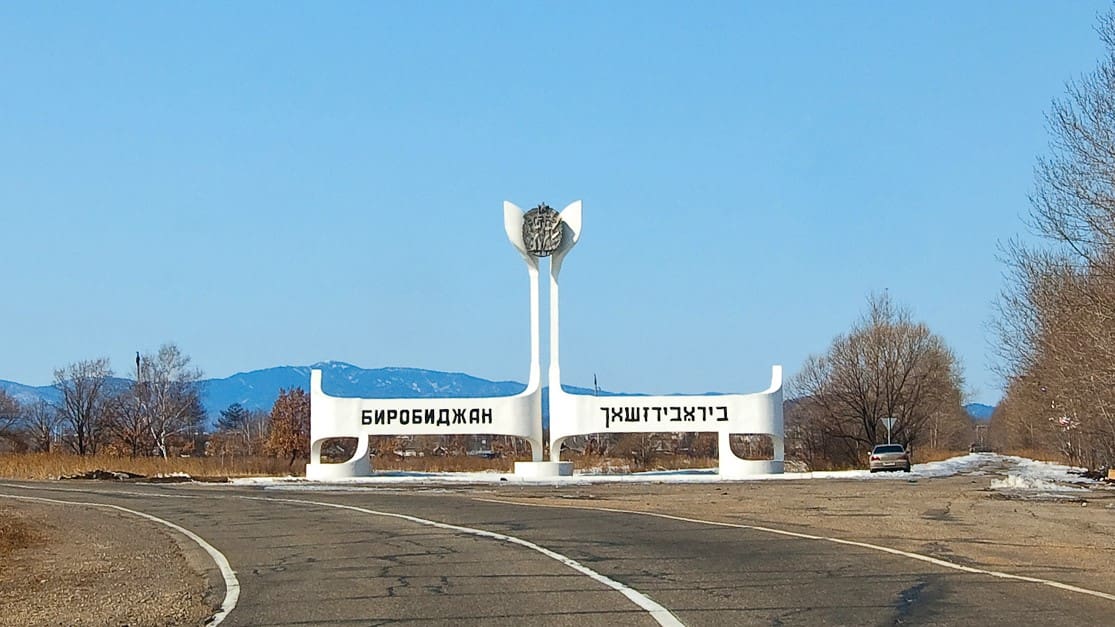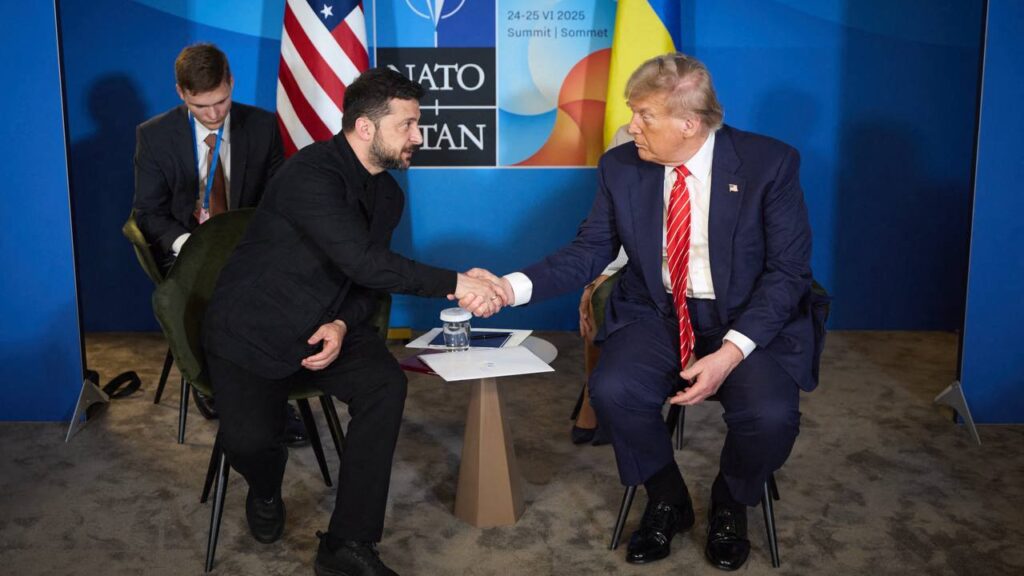Territory Guide: The Jewish Autonomous Region in a Nutshell
Nestled within the Far Eastern Federal District of Russia, the Jewish Autonomous Region (JAR) stands as a testament to resilience and cultural diversity. Established on 7 May 1934, this region has evolved into a vibrant enclave, blending history, tradition, and modernity. Spanning across 36,300 square kilometres, the JAR boasts diverse landscapes, from majestic mountain ranges to fertile lowlands.
Established with the ostensible purpose of serving as a sanctuary for Jews within the Soviet Union, the Jewish Autonomous Region failed to witness a substantial influx of Jewish migration. Instead, the demographic composition of the region is predominantly characterized by Russian and Ukrainian settlers, vastly outnumbering the Jewish population. With a population of 147,400 as of 2023, the JAR is a melting pot of ethnicities. While Russians comprise the majority at 92.74 per cent, Ukrainian and other ethnic communities contribute to the region’s vibrant cultural tapestry. The majority of inhabitants are concentrated along the primary arteries of communication, namely the Trans-Siberian Railroad and the navigable Amur River.
Birobidzhan, the capital city of the JAR, pulsates with energy and vitality. Serving as the administrative and cultural heart of the region, Birobidzhan offers a fascinating blend of historical landmarks, modern amenities, and cultural institutions.
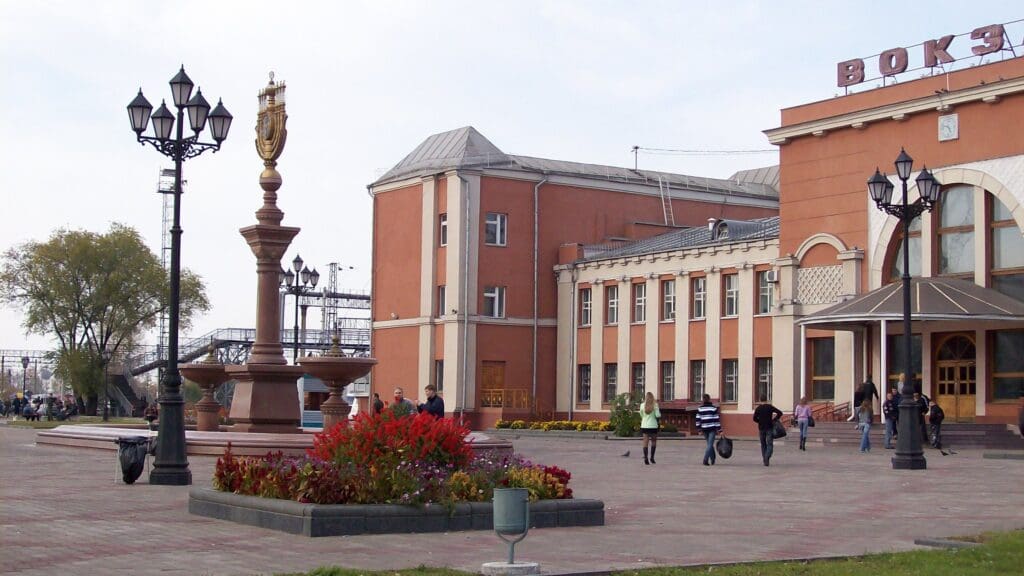
The Jewish Autonomous Region (JAR) in 2023 is organized into various administrative units to ensure effective governance and resource allocation. It comprises five municipal districts, each overseeing local services and infrastructure. Additionally, there is one city district serving as a bustling urban hub for commerce and culture. The region boasts ten rural towns, providing essential amenities while preserving its agricultural heritage. Surrounding these towns are seventeen rural districts, characterized by picturesque villages and fertile farmland. Together, these administrative units form the backbone of the JAR, fostering prosperity and inclusivity for its diverse population. With a commitment to efficient governance and community engagement, the region thrives as a model of regional development in the Far Eastern Federal District.
In governance, the Legislative Assembly of the Jewish Autonomous Region stands as the sole and paramount legislative body within the autonomous territory, embodying permanence and supremacy in its authority. Comprising 19 deputies elected to serve five-year terms, this assembly sees nine representatives elected from single-mandate constituencies, while the remaining ten are chosen through a proportional representation system within a single electoral district. The executive arm of the Jewish Autonomous Region is epitomized by the Governor and the regional Government under his leadership, alongside other executive bodies established by the regional Government. Serving as the preeminent and enduring authority in the region, the Government of the Jewish Autonomous Region holds sway over matters of executive governance. The Governor, the paramount figure of the region, assumes the highest-ranking position and is elected by Russian citizens permanently residing within the territory for a term of five years. The tenure of the present incumbent concludes in September 2025.
The economy of the Jewish Autonomous Region (JAR) is diverse and dynamic, driven by various industries and natural resources. Here’s a deeper look into the economic landscape of the region:
- Industrial Sector: The industrial sector plays a significant role in the JAR’s economy, contributing to a substantial portion of the regional GDP. Industries such as metallurgy, construction materials, timber, and food processing are prominent contributors to industrial output. The region’s strategic location and abundant natural resources make it conducive to industrial development.
- Natural Resources: The JAR is endowed with rich natural resources, including mineral deposits, fertile lands, and forests. The region’s mineral wealth encompasses deposits of gold, tin, iron, manganese, and other minerals, which support mining and extraction activities. Additionally, the vast forests of the JAR provide a sustainable source of timber, supporting the wood processing industry.
- Tourism: The JAR’s natural beauty, cultural heritage, and historical landmarks make it an attractive destination for tourists. The tourism sector contributes to economic growth through revenue generation from accommodation, dining, transportation, and recreational activities. Rich in cultural heritage, the JAR celebrates its diverse history through museums, theatres, and festivals. Visitors can immerse themselves in Jewish traditions, explore Russian folklore, and experience the warmth of local hospitality.
- Agriculture: Agriculture is another vital sector of the JAR’s economy, contributing to food security and rural livelihoods. The region’s fertile soils and favourable climate support the cultivation of various crops, including wheat, soybeans, potatoes, and vegetables. Livestock farming, including the production of meat and dairy products, is also prevalent in rural areas.
- Energy Sector: The production and distribution of electricity, gas, and water are essential components of the JAR’s economy. Thermal power stations and heat and electricity stations cater to the region’s energy needs, while the development of natural gas infrastructure, such as the Power of Siberia pipeline, holds promise for future energy expansion.
- Infrastructure and Construction: Infrastructure development and construction projects play a crucial role in driving economic growth and development in the JAR. Investment in infrastructure, including roads, bridges, and public facilities, stimulates economic activity and enhances connectivity within the region.
Driven by industries such as metallurgy, construction, and agriculture, the JAR’s economy thrives on its abundant natural resources and strategic location. Its dynamic economy offers opportunities for growth and prosperity for residents and investors alike. From scenic hiking trails to historical landmarks, the JAR beckons tourists with its wealth of attractions. Visitors can explore ancient ruins, sample traditional cuisine, and discover the region’s hidden gems, making it an ideal destination for cultural and nature enthusiasts alike. Overall, the Jewish Autonomous Region’s economy is characterized by its diverse industrial base, abundant natural resources, and strategic location in the Far Eastern Federal District. Through strategic planning, investment, and innovation, the region continues to foster economic growth and prosperity for its residents.
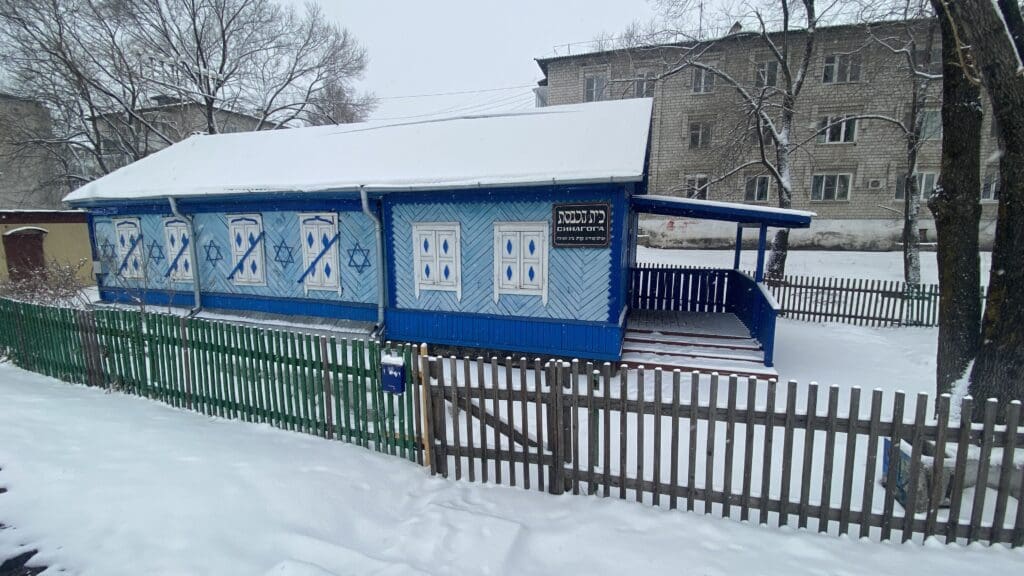
Summarized,
the Jewish Autonomous Region (JAR) holds significant importance in the Russian economy due to its diverse economic landscape and strategic advantages.
The region’s industrial sector, comprising metallurgy, construction materials, timber, and food processing industries, contributes substantially to the regional GDP, fostering industrial development and employment opportunities. Moreover, the JAR’s rich natural resources, including mineral deposits, fertile lands, and vast forests, support mining, agriculture, and timber industries, bolstering economic growth and sustainability. The region’s agricultural sector, characterized by the cultivation of various crops and livestock farming, ensures food security and rural livelihoods. Additionally, the JAR’s energy sector, facilitated by thermal power stations and infrastructure development projects, plays a crucial role in meeting the region’s energy needs and supporting future expansion. Furthermore, the JAR’s thriving tourism sector, driven by its natural beauty, cultural heritage, and historical landmarks, contributes to economic growth through revenue generation and job creation. Overall, the Jewish Autonomous Region’s diverse industrial base, abundant natural resources, and strategic location in the Far Eastern Federal District make it a vital contributor to the Russian economy, fostering economic growth and prosperity for its residents.
Historical Background
Prior to the dawn of the twentieth century, the narrative of Russia’s Jewish populace primarily unfurled within regions now beyond the confines of the contemporary Russian federation—namely Ukraine, Belarus, Bessarabia, and Lithuania. Notably absent from their settlements were Moscow, Saint Petersburg, and the heartland of Central Russia, where Jews were largely prohibited from establishing residence. Nevertheless, Jewish communities had long thrived along the shores of the Black Sea and in Crimea since ancient times, with later footholds in the Khazar kingdom, which adopted Judaism as its principal faith during the late eighth and ninth centuries. The dissolution of the Khazar domain heralded a shift, redirecting the focal point of Russian influence to Kyiv, the cradle of Russian civilization, between the tenth and thirteenth centuries. Subsequent to the decline of Kievan Russia and its absorption into Lithuania and Poland, the epicentre of Russian power migrated northward to Moscow, Pskov, and Novgorod, jurisdictions where Jewish settlement was proscribed. Only with the annexation of Polish territories did Russia inherit sizable Jewish populations, thereby confronting a ‘Jewish question’ hitherto unencountered.
In 1654, following the annexation of territories extending into Ukraine up to the right bank of the Dnieper, Russia incorporated lands inhabited by numerous Jews, notwithstanding their prior decimation during Khmelnitsky’s massacres. Further, in 1721, Peter I promulgated a decree expelling Jews from ‘Little Russia’, a directive later reaffirmed by Empress Elizabeth Petrovna in 1742, who subsequently compelled their expulsion beyond the borders of the Russian Empire.
Predominantly, it was through the partitions of Poland in 1772, 1793, and 1795 that Russia acquired territories inhabited by substantial Jewish communities—an enigmatic acquisition, as historian John Klier phrased it. Within a span of decades, a nation hitherto devoid of Jewish presence found itself governing a populace numbering between 700,000 and 800,000, constituting the world’s largest Jewish community. Catherine the Great’s measures in 1791 aimed at curtailing Jewish mobility and inhibiting settlement outside the empire’s designated ‘residential zone’ exacerbated the constraints. These restrictions, reinforced by successive monarchs until 1825, delineated a swath of territory along the empire’s western periphery—from the Baltic to the Black Sea, encompassing present-day Lithuania, Poland, Belarus, and Ukraine—wherein Jews were confined. Barred from agrarian pursuits, Jewish survival hinged upon commerce and craftsmanship, predominantly clustered within small rural enclaves or shtetls, while access to certain urban centres like Kiev remained restricted.
By the mid-nineteenth century, these strictures began to ameliorate incrementally: privileges allowing residence beyond the residential zone were extended in 1859 to ‘merchants of the first guild,’ followed by tenured professors at major universities in 1860, select tradespeople in 1865, military veterans in 1867, and those possessing higher education in 1879. However, leniency favoured solely the affluent, who gravitated toward the nation’s capitals, thereby precipitating the exodus of the intellectual elite from shtetls to Saint Petersburg and Moscow by the late nineteenth century.
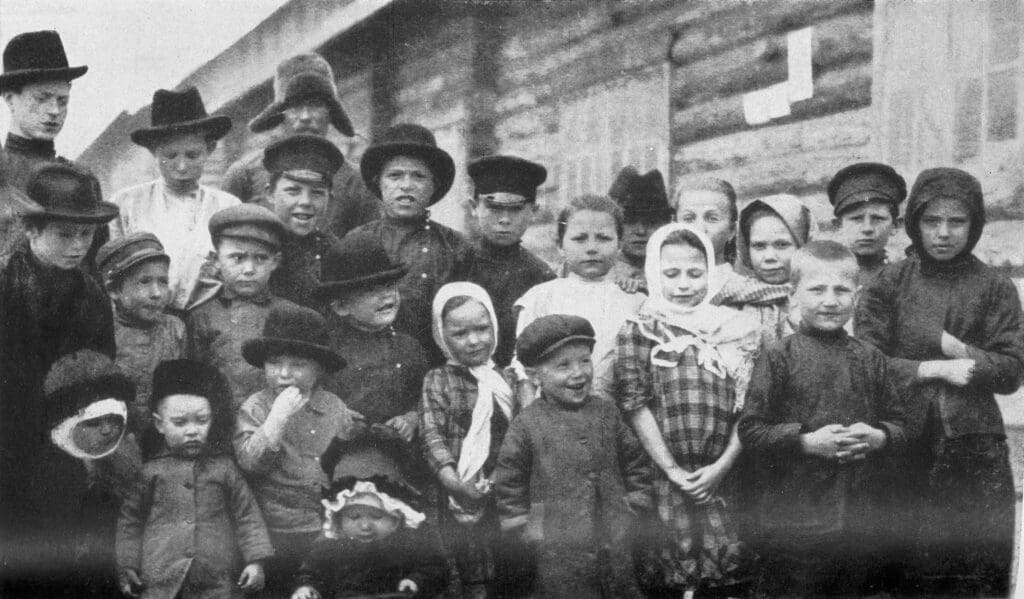
The dissolution of the ‘residential zone’ in 1917 precipitated a mass migration, catalysed further by the establishment of cultural bastions like the Jewish State Theatre (GOSET) in Petrograd and Moscow during the 1920s. Bolshevik patronage of Yiddish culture during this period, underscored by the promotion of Yiddish theatre and education, augmented Jewish integration into Soviet society.
Yet, amidst this cultural renaissance, the spectre of persecution loomed large. The rise of official anti-Semitism post-1948, marked by the suppression of Jewish institutions and intellectual figures, underscored the precariousness of Jewish existence under Soviet rule. Only with Mikhail Gorbachev’s perestroika in the late 1980s did the situation begin to ameliorate, culminating in the resurgence of Jewish religious and cultural life, alongside the easing of emigration restrictions. Nonetheless, the vibrant Yiddish culture that once flourished has receded, emblematic of the complex tapestry of Russian Jewish history.
Conditions and Reasons for the Autonomy
The genesis of the Jewish Autonomous Region (JAR) in the Far Eastern expanse of Russia in the early 20th century unfolded as a multifaceted endeavour, woven with political, ideological, and humanitarian threads, all guided by the tenets enshrined in the Russian Constitution.
Politically, the conception of a Jewish homeland within the Soviet Union sprouted during the 1920s, propelled by the Bolshevik regime’s commitment to national self-determination, a principle echoed in Article 5 of the Russian Constitution. This constitutional provision underscores the state’s obligation to ensure the rights of ethnic minorities, laying the groundwork for initiatives aimed at addressing historical injustices and fostering ethnic harmony within the diverse tapestry of the Soviet Union.
Ideologically, the notion of a Jewish autonomous region resonated deeply with the socialist ethos of equality and collective ownership
championed by the Bolsheviks, principles that find resonance in Article 6 of the Russian Constitution. This constitutional provision affirms the socialist ideals of social justice, equal opportunity, and solidarity, serving as a guiding light for the creation of a territory where Jews could exercise their right to self-determination while actively participating in the collective endeavour of building socialism.
On a humanitarian level, the establishment of the JAR was imbued with a sense of moral imperative, rooted in the principles of human dignity and equality enshrined in Article 19 of the Russian Constitution. This constitutional provision guarantees the right to freedom from discrimination based on ethnicity, religion, or other grounds, reflecting the Soviet government’s commitment to providing persecuted Jews with a sanctuary where they could live free from oppression and discrimination. Formally established on 7 May 1934, with a decree by the Central Executive Committee of the Soviet Union, the JAR emerged in the Far East, encompassing parts of the Amur Oblast and the Jewish Autonomous Region. Birobidzhan, its capital, was conceived as the nucleus of administrative activity within the burgeoning enclave, embodying the principles of local self-government enshrined in Article 12 of the Russian Constitution.
Initially, the Soviet authorities fervently encouraged Jewish migration to the JAR, aligning with the constitutional guarantee of freedom of movement and residence outlined in Article 27 of the Russian Constitution. This constitutional provision underscores the right of every citizen to choose their place of residence, paving the way for incentives such as land, housing, and employment prospects offered to Jewish settlers in the JAR. However, the idealistic vision proffered by the Soviet regime collided with the harsh realities of existence in the JAR. The region grappled with unforgiving climates, geographical isolation, and economic hurdles that stymied its growth. Moreover, the spectre of Stalinist policies, marked by collectivization, industrialization, and repression, cast a long shadow over the region, fostering forced resettlements, purges, and the curtailment of Jewish cultural and religious expression.
Despite the tumultuous journey, the Jewish Autonomous Region endures as a poignant testament to the intricate interplay of identity, ideology, and nation-building in the annals of Soviet history, serving as a microcosm of the triumphs and tribulations that shaped the era, all under the guiding principles of the Russian Constitution.
Why Is the Territory Not So Widely Known by the International Community?
The Jewish Autonomous Oblast (JAO) of Russia, nestled within the Far Eastern Federal District, remains a region of remarkable historical and cultural significance. Despite its rich tapestry of heritage, the JAO often exists on the periphery of both domestic and international discourse, its nuanced complexities overlooked by many. Several factors contribute to this subdued presence:
Firstly, the JAO’s relatively modest population size, numbering around 160,000 residents, distinguishes it from more densely populated regions within Russia. Its smaller demographic footprint means that developments and events within the region may not attract the same level of attention as those in larger urban centres or economic powerhouses.
Geographically, the JAO grapples with its isolation. Situated in the Far East, far removed from Russia’s major population hubs, the region faces challenges in accessibility and connectivity. Its remote location, coupled with sparse infrastructure, renders it less accessible and therefore less visible on both national and international platforms.
Despite its name, the JAO’s ethnic composition is diverse, with Jews, Russians, Ukrainians, and other ethnic groups contributing to its cultural tapestry. While Jews were among its early settlers, subsequent migrations have led to a more heterogeneous population. This diversity dilutes its association with Jewish culture and identity, potentially diminishing its recognition as a distinct cultural enclave.
Economically, the JAO has encountered hurdles, particularly following the collapse of the Soviet Union. While efforts have been made to revitalize its economy, the region may not be perceived as a dynamic or economically significant area. This perception, coupled with economic challenges, may deter attention from investors, policymakers, and the media.
Politically, the JAO operates as a relatively small administrative unit within the Russian Federation, with limited influence on national or international affairs. Its political activities and decisions typically have localized ramifications, further contributing to its subdued presence in broader narratives and discussions.
In summary, while the Jewish Autonomous Oblast boasts a rich history and cultural heritage, it often remains on the fringes of public discourse. Its modest population size, geographic isolation, diverse ethnic composition, economic challenges, and limited political influence collectively contribute to its subdued presence in both domestic and international spheres. Nevertheless, the JAO’s unique identity and historical significance endure, serving as a testament to resilience and cultural diversity within the broader tapestry of Russian heritage.

